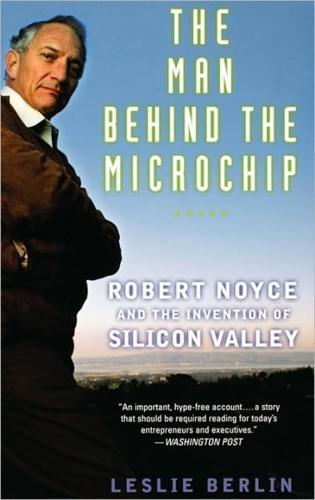
The Man Behind the Microchip: Robert Noyce and the Invention of Silicon Valley
by
Leslie Berlin
Published 9 Jun 2005
Interest in Smythe report: Bob Noyce to Family, 22 Jan. [1946], ASB. 38. He never pushed himself forward: Scott Crom, interview by Evan Ramstad, April 1995, courtesy Evan Ramstad. 39. Adrenaline and gasoline: Ralph Noyce to Bob Noyce, 29 Oct. 1945, DSN. 40. Noyce’s academic work: various letters, especially Bob Noyce to Home, undated but probably spring 1946, DSN. You won’t know: Ralph Noyce to Bob Noyce, 29 Oct. 1945, DSN. 41. I’m just sorry I’ve got such brothers: Bob Noyce to Home, Wednesday night [no date, but probably 1947], ASB. 42. $5 in the bank, $4 in my pocket: Bob Noyce to Folks, 23 Sept. [1945], DSN. $19 to buy shoes, not war bond: Harriet Noyce, “I Remember,” 36.
…
A gross overstatement: Grant Gale, untitled recollections of Bob Noyce, n.d., Gale Papers, GCA. MIT tuition scholarship: Philip M. Morse to Bob Noyce, 25 March 1949, MITP. Best returns on the time spent studying: Bob Noyce to Family Everywhere, 4 May 1949. 314 Notes to Pages 28–36 Chapter 2: Rapid Robert 1. Noyce’s scholarship: Noyce’s graduate school record, MITP. Cost of a year at MIT: MIT Bulletin, June 1949, Catalogue Issue, 1949–1950. Construction site injury: Ralph Noyce to Mother, 9 Aug. 1949, ASB. Noyce shocked by country club extravagance: Bob Noyce to Folks, 7 March [1947], ASB. 2. Determination to secure a research fellowship: Bob Noyce to Dear Family, 20 April [1950]. 3.
…
Moreover, as Fairchild counsel Roger Borovoy, who thought they might have had a case, explains with a sigh, neither he nor anyone else at Fairchild relished the prospect of suing Noyce: “We just said, ‘The hell with it.’ There was no way Sherman Fairchild, who was still active, would sue Bob Noyce. . . . All the up Sherman ever had was from Bob Noyce. Bob Noyce made Fairchild. So why screw around with this [talk of a suit] any more?”11 Grove, Vadasz, and the MOS team in the Intel lab found the notion that they might be significantly benefiting from Fairchild’s silicon gate research laughable. Recall the difference between lab work and production.

The Chip: How Two Americans Invented the Microchip and Launched a Revolution
by
T. R. Reid
Published 18 Dec 2007
One of the more poignant moments of the week came in the lobby of Stockholm’s Grand Hotel, when Jack spotted another acquaintance from years back: Gordon Moore. Bob Noyce’s engineering and entrepreneurial colleague, the man who was on the receiving end when Noyce had first enunciated the monolithic idea forty-one years earlier, routinely received invitations to the Nobel Prize ceremony. But now for the first time he had decided to attend. “I did it for my friend,” Moore said. “The Nobel Prize for the integrated circuit would have been shared by my colleague Bob Noyce if he were alive. I thought I should come so that Bob would have a presence when his invention was honored.”
…
Texas Instruments, after all, was hardly the only place in the world where people were trying to overcome the tyranny of numbers. The monolithic idea occurred to Robert Noyce in the depth of winter—or at least in the mildly chilly season that passes for winter in the sunny valley of San Francisco Bay that is known today, because of that idea, as Silicon Valley. Unlike Kilby, Bob Noyce did not have to check with the boss when he got an idea; at the age of thirty-one, Noyce was the boss. It was January 1959, and the valley was still largely an agricultural domain, with only a handful of electronics firms sprouting amid the endless peach and prune orchards. One of those pioneering firms, Fairchild Semiconductor, had been started late in 1957 by a group of physicists and engineers who guessed—correctly, as it turned out—that they could become fantastically rich by producing improved versions of transistors and other mechanical devices.
…
One of those pioneering firms, Fairchild Semiconductor, had been started late in 1957 by a group of physicists and engineers who guessed—correctly, as it turned out—that they could become fantastically rich by producing improved versions of transistors and other mechanical devices. The group was long on mechanical talent and short on managerial skills, but one of the founders turned out to have both: Bob Noyce. A slender, square-jawed man who exuded the easy self-assurance of a jet pilot, Noyce had an unbounded curiosity that led him, at one time or another, to take up hobbies ranging from madrigal singing to flying seaplanes. His doctorate was in physics, and his technical specialty was photolithography, an exotic process for printing circuit boards that required state-of-the-art knowledge of photography, chemistry, and circuit design.
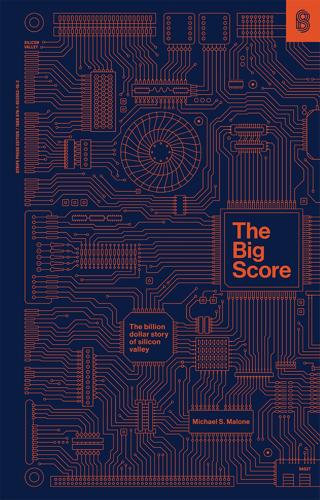
The Big Score
by
Michael S. Malone
Published 20 Jul 2021
Noyce can best be understood as the Eisenhower of Silicon Valley, keeping his egotistical and recalcitrant generals under control and coordinated as much as possible toward achieving the final objective. And, like most men in that position, Bob Noyce has an element of detachment in his personality. Many men admire him, but few seem to really know him. There is an element of reserve, of holding something back. Certainly Noyce is an affable man, a joy for interviewees, a man whose apparent humility puts even the lowliest subordinate at ease. But there is a deeper, harder part to Bob Noyce that when the pressure is on comes to the fore with an unblinking pair of eyes and a clear, cold voice of command. This other part of Bob Noyce comes from the preacher’s boy who learned not to become too attached to a home or a school or friends, because a letter in the mailbox might be about to fling him off into another world.
…
In reality, when commentators speak of the heartland roots of Silicon Valley’s leaders, they are speaking specifically of Bob Noyce, because his childhood seems to capture the essential schizophrenia between wild ambition and sober engineering conservatism that is at the center not only of Noyce’s career but of Silicon Valley itself. Noyce was born in 1927 in southeastern Iowa in a tiny town called Denmark. He was the third of four boys, and his father was a preacher in the Congregational church (as were his two grandfathers). Like most small-town ministers, the senior Noyce was perpetually on the move to new congregations, his family in tow. When Bob Noyce was six weeks old, just enough to travel, his family moved the length of the state, to the southwestern corner and the town of Atlantic.
…
By this time, the Noyces had moved to the “metropolis” of Grinnell, a college town founded by another Congregational minister, Josiah Grinnell, in 1854 as his own version of a New Eden. Grinnell, a stiff, Republican, and religious town leavened only slightly by college life, would become Bob Noyce’s first—and perhaps only—real home, the place he would credit for his eventual success and on which he would rain some of the gild of that success in later years. Being a Congregational center, Grinnell was home to much of that sect’s bureaucracy for the state. Bob Noyce’s father had proved himself an able preacher and was awarded the associate superintendency of the Iowa Conference Congregational Churches, headquartered at Grinnell College.

Microchip: An Idea, Its Genesis, and the Revolution It Created
by
Jeffrey Zygmont
Published 15 Mar 2003
For more information, please contact the Special Markets Department at the Perseus Books Group, 11 Cambridge Center, Cambridge, MA 02142, or call (800) 255-1514 or (617) 252-5298, or e-mail j.mccrary@perseusbooks.com. Text design by Jeff Williams Set in 11-point New Aster by the Perseus Books Group First printing, January 2003 123456789 10—06 05 04 03 Bob Noyce said that "optimism is an essential ingredient for innovation. How else can the individual welcome change over security, adventure over staying in safe places?" To Bob Noyce, and every other optimist. CONTENTS Acknowledgments ix Prologue: Changing Minds xiii = PART I LAYING THE FOUNDATION = 3 22 40 49 58 76 94 104 120 one two three four five six seven eight nine ten eleven twelve thirteen fourteen fifteen Thinking Small The Wild West First Contact Team Choices Chipping Away Calculated Gains Adding Contenders Common Ground Great Debates : PART II BUILDING THE Changing Guards Computers for Cooks Call Forwarding Common Computing New Language Building Muscles Epilogue: Mutual Aid Notes Index 133 140 154 170 183 200 213 221 235 VII ACKNOWLEDGMENTS SOON AFTER I STARTED RESEARCHING this book, I recognized that the story could not be accurately told unless it showed how free enterprise encouraged so much exuberant invention.
…
Shima was one of visiting Busicom engineers who had arrived in June 1969 to oversee development of the calculator chips that Hoff had turned into the 4004. Shima had stayed, joining Intel and directing design of the 8080 chip in 1974. Bob Noyce would later call him the world's most influential microprocessor designer. That's very high praise. But in the large scheme of events, Shima and Faggin and even Bob Noyce himself were only a few of the many strivers who advanced their art by responding to the enticements of corporate ownership. Likewise, Wang Labs wasn't the only organization to permute computing toward popular acceptance.
…
Instead of running off individually to find separate jobs, the defectors stuck together because they believed they could accomplish the work that Bulldog had impeded. None of the insurrectionists had much business experience. They were engineers and science dandies. They let Noyce take the lead because in addition to his keen analytical insight, Bob Noyce was a man of general abilities who seemed able to accomplish most anything he set his mind to. He was a natural leader anyway, charismatic, determined, strong-willed, confident, and wide-open generous. The Wild West 33 Noyce finessed details with Fairchild Camera and Equipment, the company that put up the money to fund the new venture, covering its rent, payroll, attorney fees, office supplies, telephones, and all the rest of the pile-on expenses that bedevil a young company until it produces some goods it can sell.

The Code: Silicon Valley and the Remaking of America
by
Margaret O'Mara
Published 8 Jul 2019
Back in the Valley, high-tech power players felt that the new president just didn’t get it.36 Another, bigger jolt came only a few months later. Bob Noyce died suddenly in Austin in June 1990, felled by a heart attack at the age of 62. Sematech no longer had its dynamic chief executive. The bereaved Valley crowd lost one of their technological pioneers and their most reliable liaison to Washington’s power brokers. His death signaled a generational change, the end of an era when Valley leaders had been men much like Bob Noyce: crew-cut engineers in shirtsleeves who were children of the Depression, molded by the Cold War, makers of tangible things like chips and computer terminals.37 As if to underscore the passage of the founding generation, the Cold War had come to an end.
…
FUNNY LITTLE COMPANIES This was what happened to Fairchild Semiconductor. Three months into their start-up’s existence, without having yet made a single chip, the Traitorous Eight landed a contract to manufacture 100 silicon transistors for an onboard computer for “the manned missile,” a new long-range bomber. Wisely, Bob Noyce and Gordon Moore were adamant that Fairchild conduct its own research, rather than depending on government contracts that would not let them own resulting patents. “‘Government funding of R&D has a deadening effect upon the incentives of the people,” declared Noyce. “This is not the way to get creative, innovative work done.”
…
In 1958, 80 percent of Fairchild’s book of business came from government contracts. That was only a preview of an even bigger windfall.17 In those Fairchild labs in early 1959, Jean Hoerni discovered a way to place multiple transistors on a single silicon wafer by protecting them with a coating of chemical oxide. Hoerni’s “planar process” allowed his colleague Bob Noyce to experiment with linking the transistors together, creating an integrated circuit, or IC, more powerful than any device before it. Another advantage: the material. Back in Dallas, Jack Kilby of Texas Instruments came up with the same idea nearly simultaneously, fabricating his IC using germanium instead of silicon.

Alpha Girls: The Women Upstarts Who Took on Silicon Valley's Male Culture and Made the Deals of a Lifetime
by
Julian Guthrie
Published 15 Nov 2019
It was ruled by men: Samuel Brannan, Levi Strauss, John Studebaker, Henry Wells, and William Fargo. Women, outnumbered and overmatched, were mostly reduced to entertainers, companions, wives, or housekeepers. Things were not that different in the more recent gold rush. The Valley was always a region dominated by men, from William Hewlett, Dave Packard, Bob Noyce, Gordon Moore, Andy Grove, Larry Ellison, Steve Jobs, and Steve Wozniak to, decades later, in the twenty-first century, Larry Page, Sergey Brin, Mark Zuckerberg, Elon Musk, Tim Cook, Travis Kalanick, and Marc Benioff. Mary Jane, fueled by peanut butter sandwiches packed in wax paper for the two-day journey, was under no illusion that it would be easy to navigate the old boys’ club of Sand Hill Road and Silicon Valley.
…
MJ flew around the country with one of Intel’s so-called SWAT teams, hosting seminars and meetings to sell customers on how Intel’s microprocessors would automate manufacturing, run assembly lines and satellites, and change the way businesses operated. Intel, from founders Gordon Moore and Bob Noyce to COO Andy Grove, poured everything into Operation Crush. Media strategist Regis McKenna—who also handled marketing for Apple—ran a $2 million advertising campaign, using images from artist Patrick Nagel. Intel offered trips to Tahiti to the top salespeople. A young man named John Doerr, brimming with competitive energy, sold the microprocessors as if his life depended on it, employing such then-novel techniques as videos to help him sell.
…
In her years at Purdue, she was defined in part by her aptitude in math. That fluency gave her the confidence to solve problems in other fields. It had helped her when she was hired at Intel, where she learned to perform under pressure and work in close, cohesive teams, under the direction of visionaries Andy Grove, Bob Noyce, and Gordon Moore. During her graduate years at Stanford business school, she had met trailblazers like Steve Jobs and Sandy Kurtzig, who arrived driving a Ferrari and carrying a pink briefcase. She still remembered Kurtzig’s parting words: “You can’t play the game if you’re not in it.”
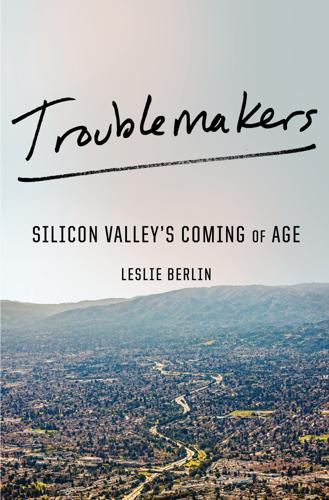
Troublemakers: Silicon Valley's Coming of Age
by
Leslie Berlin
Published 7 Nov 2017
“The focus of my entire adult life was gone, and it was devastating,” he says. The next lines are easy to overlook but vital for anyone who wants to understand how Silicon Valley works: “I felt that I had let the previous generation of entrepreneurs down—that I had dropped the baton as it was being passed to me. I met with David Packard and Bob Noyce and tried to apologize for screwing up so badly.”1 Throughout his career, Jobs spent time with older entrepreneurs such as Intel’s Robert Noyce and Andy Grove, as well as with Regis McKenna, a former employee of National Semiconductor who founded Silicon Valley’s leading public relations and marketing firm.
…
The “softer” side of a consumer product—packaging, in particular—can prove more difficult to master than the technical innards. (“How hard can it be?” may be the five most foolish words in high technology.) When Intel tried to sell digital watches built around its chips, the technology worked fine, but the business was lost on watchbands and display boxes. That experience, Intel cofounder Bob Noyce would later say, had taught him that “when the other guy’s business looks too good, you don’t know enough about it.”73 For Atari, the problem was the plastic case that held the Home Pong electronics and attached to a television. Alcorn, who was responsible for the case, could not find anyone who could build it.
…
He told his son, “Go to Nolan’s daughter and say, ‘If your daddy invented Pong, how come he had to ask my daddy to come fix his machine when it broke down?’ ” * * * I. Alcorn and Lee used an AMI chip for Home Pong, but they had originally considered an Intel chip instead, and Alcorn invited Intel cofounders Gordon Moore and Bob Noyce to visit Atari. When Don Valentine, who consulted for Atari, heard about the visit, he, in Alcorn’s description, “went ballistic, saying ‘You told them what we’re doing?’ ” When Alcorn assured him that Noyce and Moore had signed a nondisclosure agreement, Valentine, who had both worked for and competed against the Intel founders, replied, “That’s like going after a tank with a flyswatter.”
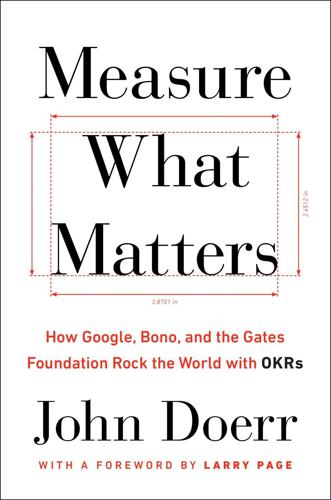
Measure What Matters: How Google, Bono, and the Gates Foundation Rock the World With OKRs
by
John Doerr
Published 23 Apr 2018
Andy Grove’s Legacy When Grove died at seventy-nine after years of stoic suffering with Parkinson’s disease, The New York Times called him “ one of the most acclaimed and influential personalities of the computer and Internet era.” He wasn’t an immortal theorist like Gordon Moore or an iconic public figure like Bob Noyce. Nor did he publish enough to rest beside Peter Drucker in the pantheon of management philosophy. Yet Grove changed the way we live. In 1997, three decades after his experiments at Fairchild, he was named Time magazine’s Man of the Year, “ the person most responsible for the amazing growth in the power and the innovative potential of microchips.”
…
ENGINEERING DEPARTMENT OBJECTIVE (Q2 1980) Deliver 500 8MHz 8086 parts to CGW by May 30. KEY RESULTS Develop final art to photo plot by April 5. Deliver Rev 2.3 masks to fab on April 9. Test tapes completed by May 15. Fab red tag start no later than May 1. Turning on a Dime Early on, just after the first of the year, Bob Noyce and Andy Grove staged a Crush kickoff at the San Jose Hyatt House. Their directive to Intel’s management corps was simple and clear: “We’re going to win in 16-bit microprocessors. We’re committed to this.” Andy told us what we had to do and why we had to do it, and that we should consider it a priority until it was done.
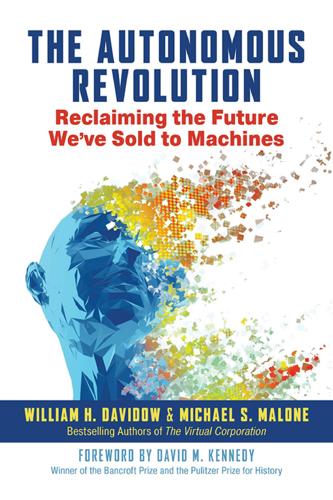
The Autonomous Revolution: Reclaiming the Future We’ve Sold to Machines
by
William Davidow
and
Michael Malone
Published 18 Feb 2020
But on paper, Shkreli’s move was a huge success: if one could get one’s hands on the precise data for a labor productivity calculation, it would probably show that Shkreli’s workers became 25 to 50 times more productive at a stroke of the pricing pen.19 Another example that makes one scratch one’s head is illustrated by a discussion that coauthor William Davidow had in the 1970s with Robert (Bob) Noyce, the inventor of the integrated circuit and the president of Intel. Bob was complaining that the financial analysts who followed the company were criticizing him because employee productivity was not growing. Bob justifiably pointed out that the number of transistors being produced by each Intel employee was growing at a rate of about 40 percent per year, but that prices were falling so fast that the dollar output per employee was not growing at all.
…
Businesses are being forced by competition, or by the fact that their business models have changed, to sell their products and services at reduced prices. As a result, they cannot monetize the effects of their productivity increases. They are reducing their workforces in response—at best, rehiring workers as part-time contractors—and paying less to the workers who remain. The problem now facing the entire economy is very similar to the problem Bob Noyce wrestled with forty years ago as president of Intel. His employees were becoming 40 percent more productive each year when output was measured in terms of transistors produced per employee. Unfortunately for Bob, his prices were under great pressure as his factories and those of his competitors flooded the market with transistors.
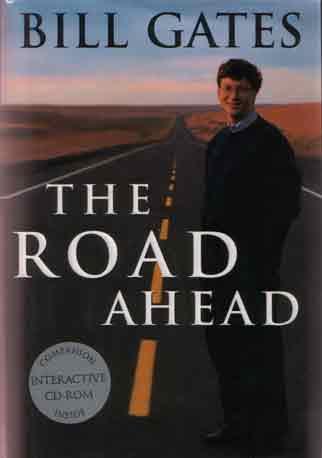
The Road Ahead
by
Bill Gates
,
Nathan Myhrvold
and
Peter Rinearson
Published 15 Nov 1995
Multiple transistor circuits could be combined onto a single chip, creating an integrated circuit. The computer chips we use today are integrated circuits containing the equivalent of millions of transistors packed onto less than a square inch of silicon. In a 1977 Scientific American article, Bob Noyce, one of the founders of Intel, compared the $300 microprocessor to ENIAC, the moth-infested mastodon from the dawn of the computer age. The wee microprocessor was not only more powerful, but as Noyce noted, "It is twenty times faster, has a larger memory, is thousands of times more reliable, consumes the power of a lightbulb rather than that of a locomotive, occupies 1/30,000 the volume and costs 1/10,000 as much.
…
And there won't be until fiber-optic cable is brought into enough neighborhoods. Fiber-optic cable is an example of technology that goes beyond what Babbage or even Eckert and Mauchly could have predicted. So is the speed at which the performance and capacity of chips have improved. In 1965, Gordon Moore, who later cofounded Intel with Bob Noyce, predicted that the capacity of a computer chip would double every year. He said this on the basis of having examined the price/performance ratio of computer chips over the previous three years and projecting it forward. In truth, Moore didn't believe that this rate of improvement would last long.

Becoming Steve Jobs: The Evolution of a Reckless Upstart Into a Visionary Leader
by
Brent Schlender
and
Rick Tetzeli
Published 24 Mar 2015
He didn’t yet have the skills to build a great company, but he admired those who had pulled it off, and he would go to great lengths to meet them and learn from them. “None of these people were really in it for the money,” he told me. “Dave Packard, for example, left all his money to his foundation. He may have died the richest guy in the cemetery, but he wasn’t in it for the money. Bob Noyce [cofounder of Intel] is another. I’m old enough to have been able to get to know these guys. I met Andy Grove [CEO of Intel from 1987 to 1998] when I was twenty-one. I called him up and told him I had heard he was really good at operations and asked if I could take him out to lunch. I did that with Jerry Sanders [founder of Advanced Micro Devices] and with Charlie Sporck [founder of National Semiconductor] and others.
…
And very publicly out. What had been the focus of my entire adult life was gone, and it was devastating. I really didn’t know what to do for a few months. I felt that I had let the previous generation of entrepreneurs down—that I had dropped the baton as it was being passed to me. I met with David Packard and Bob Noyce and tried to apologize for screwing up so badly. I was a very public failure, and I even thought about running away from the Valley. But something slowly began to dawn on me—I still loved what I did. The turn of events at Apple had not changed that one bit. I had been rejected, but I was still in love.

More: The 10,000-Year Rise of the World Economy
by
Philip Coggan
Published 6 Feb 2020
In 1959, Jack Kilby and Bob Noyce of Fairchild developed the microchip, which could be made with silicon or another material that acted as a semiconductor. On the chip was an integrated circuit, consisting of tiny transistors, resistors and capacitors.9 In 1965, Gordon Moore, another Fairchild employee, wrote a famous paper, stating that, by shrinking transistors, engineers would be able to double the number that fit on a chip every year. While he later amended this to a doubling every two years, he correctly forecast the exponential growth of computing power.10 Along with Bob Noyce, Gordon Moore founded Intel in 1968.
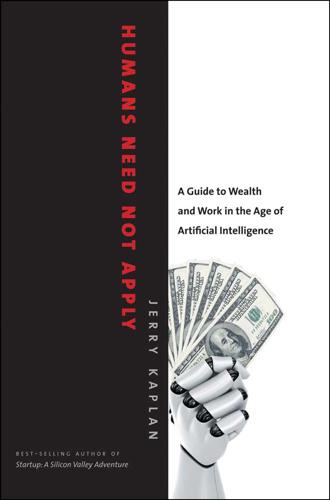
Humans Need Not Apply: A Guide to Wealth and Work in the Age of Artificial Intelligence
by
Jerry Kaplan
Published 3 Aug 2015
Mark Zuckerberg, founder of Facebook, would have worked just as hard for a tiny fraction of the rewards he reaped. The founders of Fairchild Semiconductor widely regarded as the seminal Silicon Valley startup—were thrilled to strike it rich when the parent company bought them out for the princely sum of $250,000 each. In the words of Bob Noyce, “The money doesn’t seem real. It’s just a way of keeping score” (http://www.stanford.edu/class/e140/e140a/content/noyce.html, originally published by Tom Wolfe in Esquire, December 1983). 16. Matt Taibbi, “The Great American Bubble Machine,” Rolling Stone, April 5, 2010, http://www.rollingstone.com/politics/news/the-great-american-bubble-machine-20100405. 17.
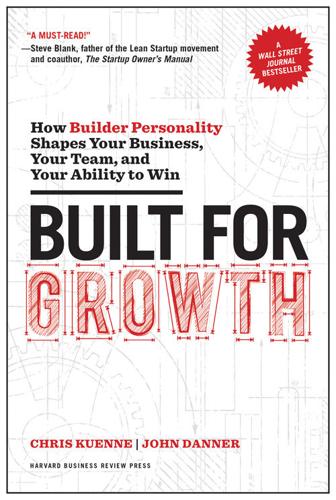
Built for Growth: How Builder Personality Shapes Your Business, Your Team, and Your Ability to Win
by
Chris Kuenne
and
John Danner
Published 5 Jun 2017
That’s a decision that immediately puts the issue of Builder Personality front and center—for both of you. Just take a look at this partial list of cobuilders: Apple: Steve Jobs and Steve Wozniak Microsoft: Bill Gates and Paul Allen Ben & Jerry’s: Ben Cohen and Jerry Greenfield Intel: Gordon Moore and Bob Noyce P & G: William Procter and James Gamble Airbnb: Nathan Blecharczyk, Brian Chesky, and Joe Gebbia Google: Sergey Brin and Larry Page Rent the Runway: Jenn Hyman and Jenny Fleiss Warby Parker: Neil Blumenthal, Dave Gilboa, Andrew Hunt, and Jeffrey Raider Pinterest: Ben Silbermann, Evan Sharp, and Paul Sciarra Eventbrite: Julia Hartz and Kevin Hartz HP: Bill Hewlett and Dave Packard These builder partnerships cut across industry, geographic, gender, and cultural lines.

How We Got Here: A Slightly Irreverent History of Technology and Markets
by
Andy Kessler
Published 13 Jun 2005
Done with that, he opened a bunch more holes in the middle of the P-type and diffused in impurities to create N-type regions. When finished, he had NPN devices, as many as he could fit. I think Hoerni started with eight devices. But Hoerni did no better than Kilby. He still needed wires to connect the devices. In early 1959, his colleague, Bob Noyce, came up with the solution. Noyce grew an insulator, Silicon Dioxide, which is glass, over the top of the entire circuit. Then again using a mask and photoresist, he cut holes in the glass where he needed to connect to the N, the P and the N regions. Noyce then deposited molten aluminum over the top of the glass, which ran into the holes to make a connection.
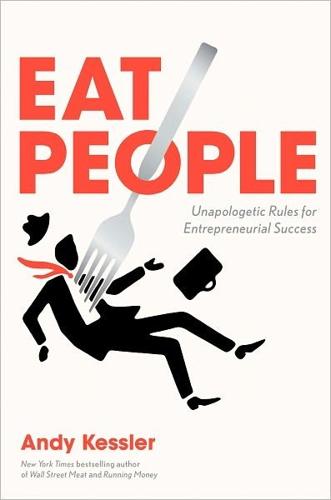
Eat People: And Other Unapologetic Rules for Game-Changing Entrepreneurs
by
Andy Kessler
Published 1 Feb 2011
Gates was pitching Wall Street about upgrading to Windows from DOS (without much luck). Eventually, Wall Street discovered spreadsheets, which lowered their costs and made it vastly easier to do things like take two companies or two financial instruments and merge them into something financeable. I met Gordon Moore and Andy Grove and Bob Noyce, the founders of Intel, just as they almost lost out to cheap Japanese memory makers—before turning the massive company on a dime to sell processors (at high margins) to the IBMs and Compaqs and then Dells of the world, driving faster and faster computers so better and better graphics could make computers easier to use for business and making all of us more productive—well, except for those of us who love video games.
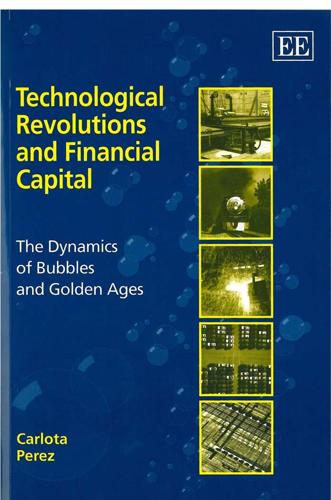
Technological Revolutions and Financial Capital: The Dynamics of Bubbles and Golden Ages
by
Carlota Pérez
Published 1 Jan 2002
chapter title PART ONE Technological Revolutions as Successive Great Surges of Development 1 2 Technological Revolutions and Financial Capital The Turbulent Ending of the Twentieth Century 3 1. The Turbulent Ending of the Twentieth Century On a day like any other in November 1971, a small event in Santa Clara California was about to change the history of the world. Bob Noyce and Gordon Moore launched Intel’s first microprocessor, the precursor of the computer on a chip. It was the big-bang of a new universe, that of all-pervasive computing and digital telecommunications. Chips were powerful, they were cheap and they opened innumerable technological and business possibilities.

Wall Street Meat
by
Andy Kessler
Published 17 Mar 2003
Although I wanted to ask Monsieur Gassee about product issues, such as what chips they used, he stood in a corner, shrugging his shoulders, doing his best Inspector Clouseau imitation, repeating “I dieu nut kneeaauuww.” Sculley’s “no place for Steve Jobs” line was on the front page of every paper the next morning. Bob and I went to see several other companies, as well as to an Intel analyst meeting. I met Intel’s three founders, Gordon Moore, Andy Grove and Bob Noyce. I also met a cast of characters who would follow me around like a bad dream for the next decade. They were the other semiconductor analysts around the Street, my competitors: The number one analyst, Alan Rieper at Cowen, Tom Kurlak at Merrill Lynch, and Jim Barlage at Smith Barney. “These are the enemy,” Bob explained to me, “these are the Institutional Investor All-American analysts.

The Innovators: How a Group of Inventors, Hackers, Geniuses and Geeks Created the Digital Revolution
by
Walter Isaacson
Published 6 Oct 2014
He absorbed everything you said and then answered very levelly in a soft baritone voice and often with a smile that showed off his terrific set of teeth. The stare, the voice, the smile; it was all a bit like the movie persona of the most famous of all Grinnell College’s alumni, Gary Cooper. With his strong face, his athlete’s build, and the Gary Cooper manner, Bob Noyce projected what psychologists call the halo effect. People with the halo effect seem to know exactly what they’re doing and, moreover, make you want to admire them for it. They make you see the halos over their heads.54 As a kid, Noyce benefited from a situation that was common back then: “Dad always managed to have some sort of workshop in the basement.”
…
“I blackmailed Larry Roberts into becoming famous,” Taylor later said.45 When Roberts first moved to Washington, around Christmas, he and his wife stayed for a few weeks with Taylor while looking for a home. Even though they were not destined to be personal pals, the relationship between the two men was cordial and professional, at least during their years at ARPA.46 Roberts was not as genial as Licklider, nor as extroverted as Taylor, nor as congregational as Bob Noyce. “Larry’s a cold fish,” according to Taylor.47 Instead he had a trait that was just as useful in promoting collaborative creativity and managing a team: he was decisive. More important, his decisiveness was based not on emotion or personal favoritism but rather on a rational and precise analysis of options.

The Power Law: Venture Capital and the Making of the New Future
by
Sebastian Mallaby
Published 1 Feb 2022
Then Bud Coyle suggested Sherman Fairchild, a playboy with an inherited fortune who was a self-described “putterer” and science enthusiast.[89] Like the Whitneys and the Rockefellers, Fairchild had enough money to yawn at the prospect of more of it. Unlike the Whitneys and the Rockefellers, he might be tickled by the notion of a new semiconductor venture. In late August 1957, Bob Noyce and Eugene Kleiner flew to New York. They made their way to Sherman Fairchild’s Manhattan town house, which was fitted out with glass walls and whizzy blinds that opened and shut electronically.[90] After some initial pleasantries, Noyce uncorked the flair that Rock had seen in him. Fixing Fairchild with those blazing eyes, he explained that the future would be built on silicon-and-wire devices, meaning on simple sand and metal, materials that cost almost nothing.
…
Undeterred, the freed men attached wires to a nearby electricity pole so they could rig up a power saw; it was winter, and Vic Grinich, a lanky, curly-haired tinkerer, could be seen outside battling the elements, decked out in gloves, hat, muffler, and pipe, with a heater hooked up to the power line.[95] Company strategy at Fairchild was hashed out at collaborative bull sessions; sales meetings featured brownies and whiskey; and new hires straight out of grad school were empowered to make major purchasing decisions. As the weather turned warmer, Bob Noyce, the acting chief of the collective, showed up at work in shorts.[96] Six months after the founding, Rock went out to California to check on progress. He had multiple motives. Hayden still held shares representing just over a fifth of the new startup, not counting the Fairchild fine print, and Rock was on the hunt for more West Coast tech deals.
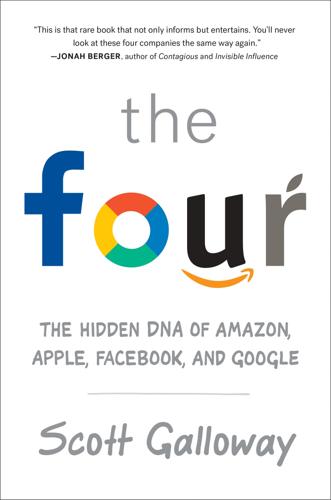
The Four: How Amazon, Apple, Facebook, and Google Divided and Conquered the World
by
Scott Galloway
Published 2 Oct 2017
Because for all of his less than savory traits, he accomplished one important thing: he turned Apple, after the risk-averse years under John Sculley, into a company—arguably the biggest company ever—that made taking risks its first option. Unlike every other Fortune 500 CEO, Steve Jobs punished careful thinking, and history recorded the results. Steve Jobs—not Bob Noyce at Intel or David Packard at HP—became the first person to found a company and then make it the most valuable company in the world. Stores, touch screens, and a reheated MP3 player all, at the time, made no sense. For all the good that Jobs did for Apple, he was also a destructive force inside the company.

The New Class Conflict
by
Joel Kotkin
Published 31 Aug 2014
A critical difference with traditional industries has been the almost total absence of organized labor. Not so much anti-union as post-union, the new Oligarchs have lived in an atmosphere untroubled by the labor activism that has cast firms such as Walmart and McDonald’s in a negative light. “Remaining non-union is an essential for survival for most of our companies,” Intel founder Bob Noyce said over two decades ago. More recently, venture capitalist Marc Andreessen declared that “there doesn’t seem to be a role” for unions in the modern economy because people are “marketing themselves and their skills.” Amazon, which has the kind of warehouse facilities that could be organized, has battled unions not only in the United States but also in more union-friendly Europe as well.125 The good news for the tech sector is that they need less people than ever before.
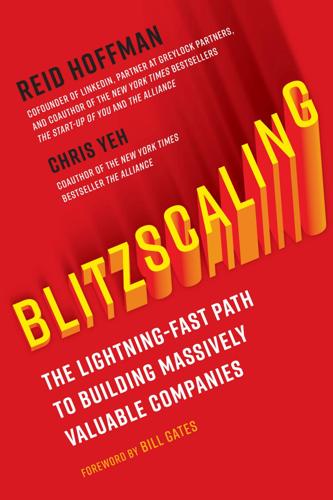
Blitzscaling: The Lightning-Fast Path to Building Massively Valuable Companies
by
Reid Hoffman
and
Chris Yeh
Published 14 Apr 2018
Most of the iconic companies that have shaped and defined the technology industry—Hewlett-Packard, Intel, Apple, Google, Facebook—are known for their distinctive cultures, regardless of their era. The same can be said for more recent start-up market leaders like Airbnb and Salesforce.com. Typically, the credit for these cultures goes to the founders. Bill Hewlett and David Packard are synonymous with the HP Way. Bob Noyce, Gordon Moore, and Andy Grove are referred to as the Intel Trinity. Steve Jobs, Larry Page and Sergey Brin, and Mark Zuckerberg are seen as the sources of Apple’s, Google’s, and Facebook’s cultures. Yet while the personalities of the founding team play a critical role in defining an organization’s culture, it is more accurate to say that an organization’s culture emerges over time based on the actions of many people, not just the founders.

The Rise of the Network Society
by
Manuel Castells
Published 31 Aug 1996
The invention of the planar process in 1959 by Fairchild Semiconductors (in Silicon Valley) opened up the possibility of the integration of miniaturized components with precision manufacturing. Yet the decisive step in micro-electronics had taken place in 1957: the integrated circuit (IC) was co-invented by Jack Kilby, a Texas Instrument engineer (who patented it), and Bob Noyce, one of the founders of Fairchild. But it was Noyce who first manufactured ICs by using the planar process. It triggered a technological explosion: in only three years, between 1959 and 1962, prices of semiconductors fell by 85 percent, and in the next ten years production increased by 20 times, 50 percent of which went to military uses.44 As a point of historical comparison, it took 70 years (1780–1850) for the price of cotton cloth to drop by 85 percent in Britain during the industrial revolution.45 Then, the movement accelerated during the 1960s: as manufacturing technology improved and better chip design was helped by computers using faster and more powerful micro-electronic devices, the average price of an integrated circuit fell from $50 in 1962 to $1 in 1971.
…
When he was turned down he took a job in Silicon Valley, with a subsidiary of Beckman Instruments, mainly because his mother lived in Palo Alto. With the support of Beckman Instruments he decided to create there his own company, Shockley Transistors, in 1956. He recruited eight brilliant young engineers, mainly from Bell Labs, attracted by the possibility of working with Shockley; one of them, although not precisely from Bell Labs, was Bob Noyce. They were soon disappointed. While learning the fundamentals of cutting-edge micro-electronics from Shockley, they were turned off by his authoritarianism and stubbornness which led the firm into dead-ends. In particular, they wanted, against his decision, to work on silicon as the most promising route to the larger integration of transistors.
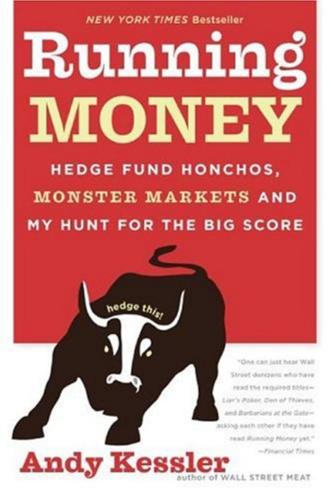
Running Money
by
Andy Kessler
Published 4 Jun 2007
Wherever the photoresist remained after the chemical bath, the impurities would not diffuse underneath. When finished, he had his integrated transistors, as many as he could fit. I think Hoerni started with eight devices. But Hoerni did no better than Kilby; he still needed wires to connect the devices. In early 1959, his colleague, Bob Noyce, came up with the solution. Noyce blew in some oxygen and grew an insulator, silicon dioxide, literally glass, over the top of the entire circuit. Then, again using a mask and photoresist, he cut holes in the glass where he needed to connect to the transistor nodes. Noyce then deposited molten aluminum over the top of the glass, which ran into the holes to make a connection, so you were left with flat wires connecting the transistors.

Late Bloomers: The Power of Patience in a World Obsessed With Early Achievement
by
Rich Karlgaard
Published 15 Apr 2019
But in the late 1970s, Japanese and then South Korean companies entered the memory chip market and undercut Intel on price. By the early 1980s, Intel was in a financial crisis. Grove suggested a radical solution: Intel should quit the memory chip business and bet its future on the microprocessor. There was heated disagreement. Bob Noyce thought quitting the memory business was the same as losing. But Grove persisted. As he recounted years later, “I asked Gordon [Moore], you know, what would happen if somebody took us over? What would the new guy do? To which Gordon said, ‘The new owner would get rid of us (laughter) and get out of the memory business.’ ” Intel did just that.
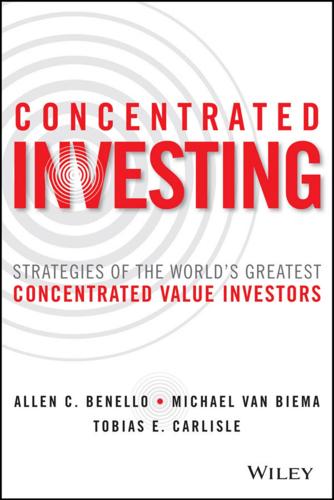
Concentrated Investing
by
Allen C. Benello
Published 7 Dec 2016
Shortly after meeting Buffett in 1967, Rosenfield bought $5,252 worth of Berkshire Hathaway—300 shares—for the endowment, and persuaded Buffett to join Grinnell’s board, which he did in 1968.20 Grinnell held the Berkshire position for more than 20 years, finally selling between 1989 and 1993 for $3.7 million for reasons that neither Buffett nor Rosenfield could remember.21 The endowment would make a second serendipitous investment when Robert Noyce, a Grinnell trustee and alumnus, offered Grinnell stock in his then-private start-up, NM Electronics.22 Noyce had almost been expelled from Grinnell for stealing a pig and roasting it at a campus luau.23 He would have been expelled but for the intervention of his physics professor who felt that Noyce was the best student he’d ever taught. 24 The professor managed to persuade the school to reduce the expulsion to a one-semester suspension.25 Noyce never forgot the favor, and made the stock available to the school if it wanted it.26 Rosenfield told Noyce that the endowment would take all the stock he’d let it have.27 Grinnell’s endowment took 10 percent of the $3 million private placement (Grinnell put up $100,000, and Rosenfield and another trustee put up $100,000 each).28 Shortly thereafter the company, then renamed Intel, went public in 1971. Grinnell started selling the stake in 1974, at which time it was worth $14 million, more than half the value of the $27 million endowment. Noyce was concerned that Grinnell should have so much exposure to a single name associated with him, and cajoled Rosenfield to sell. He recalls, “Bob [Noyce] was trembling about it. He’d say, ‘I don’t want the college to lose any money on account of me.’ But I’d say, “We’ll worry about that, Bob. We’ll take the risk.”29 Noyce eventually wore Rosenfield down, however, and Grinnell fully exited the stake by 1980. On its sale, the Intel investment had generated a profit of 4,583 percent.

Life After Google: The Fall of Big Data and the Rise of the Blockchain Economy
by
George Gilder
Published 16 Jul 2018
In its intellectual power, commercial genius, and strategic creativity, Google is a worthy contender to follow Newton, Gödel, and Shannon. It is the first company in history to develop and carry out a system of the world. Predecessors such as IBM and Intel were comparable in their technological drive and accomplishment, from Thomas Watson’s mainframes and semiconductor memories to Bob Noyce’s processors and Gordon Moore’s learning curves. But Moore’s Law and Big Blue do not provide a coherent system of the world. Under the leadership of Larry Page and Sergey Brin, Google developed an integrated philosophy that aspires, with growing success, to shape our lives and fortunes. Google has proposed a theory of knowledge and a theory of mind to animate a vision for the dominant technology of the world; a new concept of money and therefore price signals; a new morality and a new idea of the meaning and process of progress.
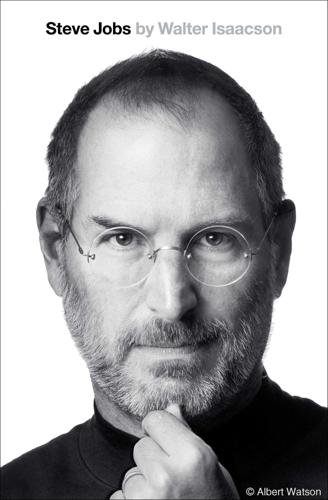
Steve Jobs
by
Walter Isaacson
Published 23 Oct 2011
Knowing that he can crush you makes you feel weakened and eager for his approval, so then he can elevate you and put you on a pedestal and own you.” Ann Bowers became an expert at dealing with Jobs’s perfectionism, petulance, and prickliness. She had been the human resources director at Intel, but had stepped aside after she married its cofounder Bob Noyce. She joined Apple in 1980 and served as a calming mother figure who would step in after one of Jobs’s tantrums. She would go to his office, shut the door, and gently lecture him. “I know, I know,” he would say. “Well, then, please stop doing it,” she would insist. Bowers recalled, “He would be good for a while, and then a week or so later I would get a call again.”
…
When a rendering of the sleek, futuristic, perfectly circular building appeared on the screen, he paused and smiled. “It’s like a spaceship has landed,” he said. A few moments later he added, “I think we have a shot at building the best office building in the world.” The following Friday, Jobs sent an email to a colleague from the distant past, Ann Bowers, the widow of Intel’s cofounder Bob Noyce. She had been Apple’s human resources director and den mother in the early 1980s, in charge of reprimanding Jobs after his tantrums and tending to the wounds of his coworkers. Jobs asked if she would come see him the next day. Bowers happened to be in New York, but she came by his house that Sunday when she returned.

The Myth of Capitalism: Monopolies and the Death of Competition
by
Jonathan Tepper
Published 20 Nov 2018
We often think in the U.S. that people or companies create success, but what Silicon Valley shows us is that often it's communities of people across a region.”3 If Noyce thought Shockley was God in the early 1950s, Steve Jobs idolized Noyce in the 1970s. When Apple was starting, Noyce was already a legend with Intel. “Bob Noyce took me under his wing,” Jobs said. “He tried to give me the lay of the land, give me a perspective that I could only partially understand.” Jobs continued, “You can't really understand what is going on now unless you understand what came before.”4 Although Jobs worshipped Noyce, he failed to give his own Apple employees the same freedoms that allowed Noyce's best innovations to flourish.
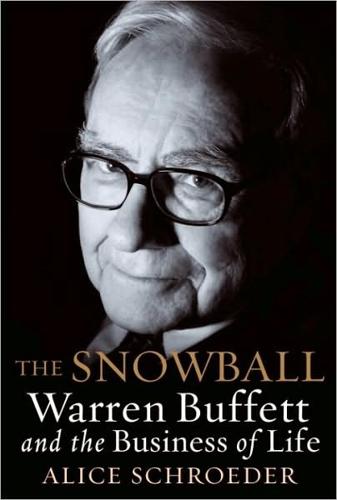
The Snowball: Warren Buffett and the Business of Life
by
Alice Schroeder
Published 1 Sep 2008
After King’s speech, Rosenfield easily recruited Buffett to become a Grinnell trustee. Given Buffett’s dislike of committees and meetings, this signified how much he had been touched by the convocation—as well as how close he had grown to Rosenfield. Naturally, he went straight onto the finance committee, where he found the trustees to be a group of like-minded men. Bob Noyce, who ran a company called Fairchild Semiconductor, which made electronic circuits—something about which Buffett knew little and had even less interest—was chairman. Noyce, a former Grinnell graduate who had once been expelled from school for stealing a pig to roast at a luau—a serious offense in a pig-farming state—had the aura of a man who knew what he was about.17 Yet “he was really a regular guy.
…
Though proud of having husbanded, tended, and compounded his partnership, with minimal risk, from seven investors and $105,000 to more than three hundred people and $105 million, Buffett had become an elder of the market, seemingly eclipsed by young barnstormers who could flash a couple of years’ worth of showy numbers and joy-ride new investors into giving them $500 million nearly overnight. He seemed especially—and comfortably—antiquated when it came to all the new technology companies that were forming. At Grinnell College, he showed up for a meeting to find his fellow trustee Bob Noyce itching to leave Fairchild Semiconductor. Noyce, Gordon Moore (its research director), and its assistant director of research and development, Andy Grove, had decided to start a nameless new company in Mountain View, California, based on a vague plan to extend the technology of circuits to “higher levels of integration.”23 Joe Rosenfield and the college endowment fund each said they would put in $100,000, joining dozens who were helping to raise $2.5 million for the new company—which was soon to be named Intel, for Integrated Electronics.
…
A mood of deep pessimism settled on the country. Investors piled into gold, diamonds, platinum, art, real estate, rare coins, mining stocks, feedlot cattle, and oil; “cash is trash” was the watchword of the day. High school girls wore necklaces made of Krugerrand coins. A brash new trustee at Grinnell, Steve Jobs, protégé of the esteemed Bob Noyce, tried to talk the investment committee into selling all the stocks and buying gold.36 An engineer in his mid-twenties, Jobs was obviously a very smart guy, but the investment committee demurred, and Grinnell did not buy gold. In Forbes, Buffett wrote the opposite: It was time for investors to buy stocks.

Gamers at Work: Stories Behind the Games People Play
by
Morgan Ramsay
and
Peter Molyneux
Published 28 Jul 2011
Bushnell: We did about 35,000 units. They were each getting about $1,000 a piece, so we made about $35 million on it. Ramsay: In terms of staff, did you recruit any advisors? Did you know anyone who could provide you insight into the business side? Bushnell: I had a good relationship with a guy named Bob Noyce, who was one of the founders of Intel. I really looked up to him, and would often give him a call when I had a thorny problem. Jerry Sanders from AMD was another guy that I would tap from time to time. Those were probably the two major mentors who I would say I had in the Valley. I also tried over and over again to hire a president.

Exploding the Phone: The Untold Story of the Teenagers and Outlaws Who Hacked Ma Bell
by
Phil Lapsley
Published 5 Feb 2013
In 1970 an even smaller company called Computer Terminal Corporation approached Intel about having it manufacture a new chip that CTC had designed. The interesting thing about the new chip was that CTC wanted it to hold an entire computer on a single piece of silicon; in other words, it would be a computer on a chip, something that had never been done before. Bob Noyce allegedly responded that his company could do it, but it would be a dumb business move for Intel, which was in the business of selling chips. “If you have a computer chip, you can only sell one chip per computer,” he said, “while with memory you can sell hundreds of chips per computer.” Still, money talked; CTC and Intel signed a $50,000 development contract.
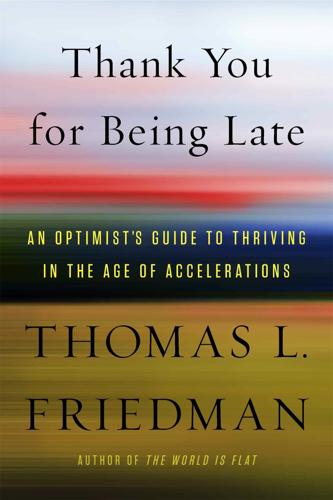
Thank You for Being Late: An Optimist's Guide to Thriving in the Age of Accelerations
by
Thomas L. Friedman
Published 22 Nov 2016
Irwin: The Cell Phone Guy It was wonderful for consumers for all these networking breakthroughs to occur, but someone had to pack them into a phone you could carry in your pocket to get the full frontal revolution—and no individual was more responsible for this mobile phone revolution than Irwin Jacobs. In the pantheon of the great innovators who launched the Internet age—Bill Gates, Paul Allen, Steve Jobs, Gordon Moore, Bob Noyce, Michael Dell, Jeff Bezos, Marc Andreessen, Andy Grove, Vint Cerf, Bob Kahn, Larry Page, Sergey Brin, and Mark Zuckerberg—save a few lines for Irwin Jacobs, and add Qualcomm to the list of important companies you’ve barely heard of. Qualcomm is to mobile phones what Intel and Microsoft together were to desktops and laptops—the primary inventor, designer, and manufacturer of the microchips and software that run handheld smartphones and tablets.

Valley of Genius: The Uncensored History of Silicon Valley (As Told by the Hackers, Founders, and Freaks Who Made It Boom)
by
Adam Fisher
Published 9 Jul 2018
They went over to a new funder, Fairchild, who said, “Yes, we’ll take you guys over here.” Steve Jobs: Fairchild was the second seminal company in the Valley, after Hewlett-Packard, and really was the launching pad for every semiconductor company in the whole semiconductor industry which built the Valley. Po Bronson: Then Bob Noyce and Gordon Moore left Fairchild to start Intel, and that just didn’t happen anywhere else in the country. Labor laws were different in other states. Brad Handler: It’s just a public policy difference from hundreds of years ago. Jamis MacNiven: Then Moore created this law he’s famous for: computer power doubling every eighteen months.
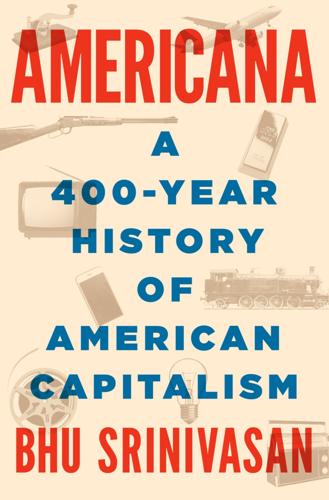
Americana: A 400-Year History of American Capitalism
by
Bhu Srinivasan
Published 25 Sep 2017
Predictably, given the Fairchild connection, their first customer was IBM, servicing the military. Before long, Fairchild exercised his option to buy all of Fairchild Semiconductor. While the eight men made substantial windfalls, the investment structure lacked the unlimited-upside element now intrinsic to the idea of the Silicon Valley start-up. In 1968 two of the original eight, Bob Noyce and Gordon Moore, looked to start another company. Given the optimism of the capital markets about anything to do with electronics and computing at the time—the same conditions that valued Ross Perot’s six-year-old EDS at over $200 million—the pair were able to forgo a corporate sponsor this time in setting up their new venture.

Americana
by
Bhu Srinivasan
Predictably, given the Fairchild connection, their first customer was IBM, servicing the military. Before long, Fairchild exercised his option to buy all of Fairchild Semiconductor. While the eight men made substantial windfalls, the investment structure lacked the unlimited-upside element now intrinsic to the idea of the Silicon Valley start-up. In 1968 two of the original eight, Bob Noyce and Gordon Moore, looked to start another company. Given the optimism of the capital markets about anything to do with electronics and computing at the time—the same conditions that valued Ross Perot’s six-year-old EDS at over $200 million—the pair were able to forgo a corporate sponsor this time in setting up their new venture.
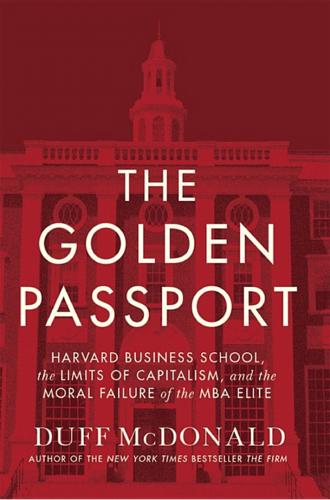
The Golden Passport: Harvard Business School, the Limits of Capitalism, and the Moral Failure of the MBA Elite
by
Duff McDonald
Published 24 Apr 2017
That model has been mimicked by almost every venture capital firm that followed it, most of whom would love to mimic its performance as well: Funded with just $5 million, by the time the firm was dissolved just seven years later, it had generated 54 percent annual returns, generating some $90 million in capital gains for its investors.1 One of their investments was Silicon Valley’s first-ever unicorn: Scientific Data Systems, which sold to Xerox for $1 billion in 1965. But Rock was just getting started. In 1968, he funded two of the Fairchild Eight once again, kicking in $300,000 (along with Venrock’s Peter Crisp, below) when Bob Noyce and Gordon Moore bolted Fairchild to found Intel. A subsequent call from former Intel employee Mike Markkula led Rock to invest in Apple Computer. Interestingly, the HBS-bred Rock never found a true connection with the iconoclastic Steve Jobs, and supported the hiring of Pepsi-Cola president John Sculley to replace Jobs as CEO of Apple in 1983.

Palo Alto: A History of California, Capitalism, and the World
by
Malcolm Harris
Published 14 Feb 2023
Automation was expensive and risky: Fairchild production supervisor Tom Maher tells the story of company engineers who designed a $1 million machine to automate an assembly step only to have a young engineer immediately come up with a way to do it three times faster with workers for a set-up cost of $60.48 The Fairchild production chief “would not allow any spending for new automatic equipment for several months” as a result.49 That production chief was named Charlie Sporck, and at Fairchild, and subsequently at the spin-off National Semiconductor, he played an important role in directing the future of Silicon Valley and the American economy at large. In the early 1960s, only around five years after the company started, Fairchild opened its first overseas assembly plant, in Hong Kong. The move—suggested by Bob Noyce—surprised the rest of the industry, but with the low start-up costs for assembly lines, it was a textbook case of labor arbitrage. According to Wilf Corrigan, who was promoted to oversee Fairchild’s overseas manufacturing in the mid-1960s, the going rate for “semiskilled” assembly work was $2.50 an hour in the Bay Area (more than $20 in 2022 money) but only 10 cents in Hong Kong, a 96 percent reduction.50 Fairchild was the innovator in what Corrigan called “jet-age automation” and what we have come to call offshoring.51 At around $1 a day, Fairchild found a way to match the nominal cost of Chinese railroad workers a full century after they built the Central Pacific.